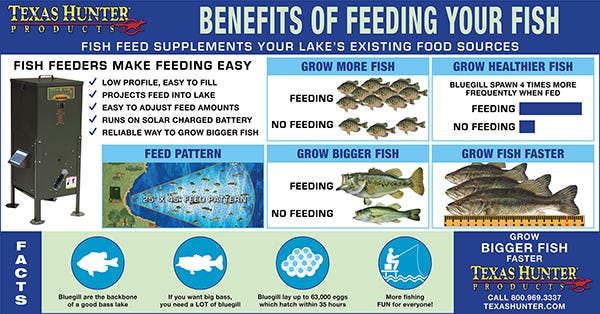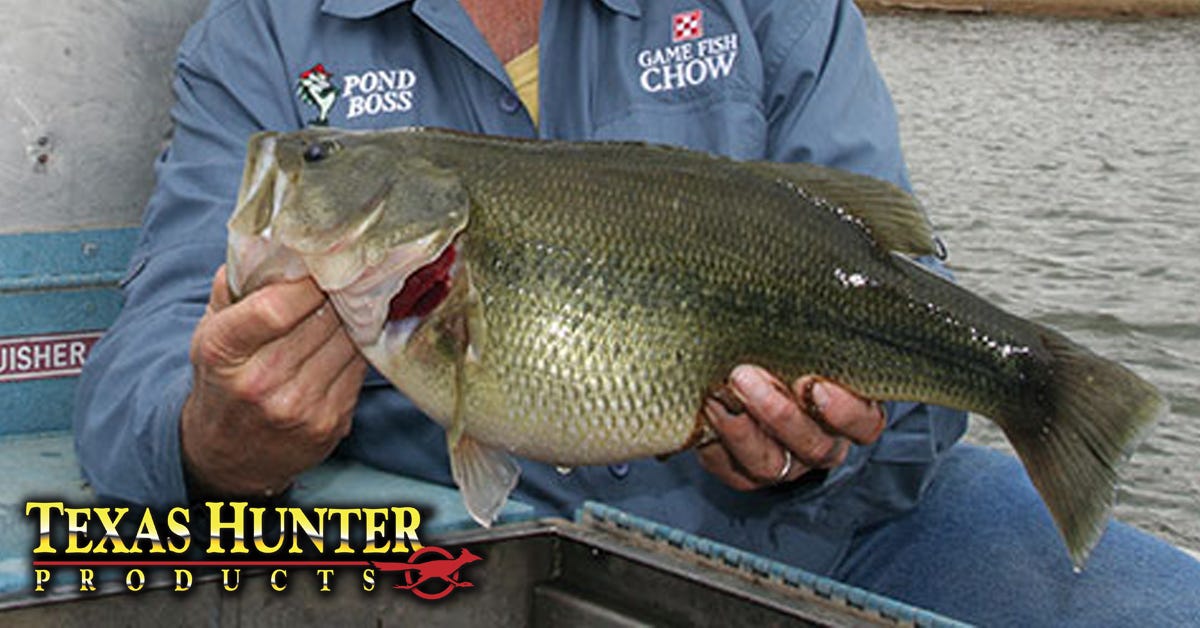- Nov 9, 2022
Choosing The Best Gravity Deer Feeders

From our friends at Great Days Outdoors
Many years ago, at one of those holiday family gatherings, I met a gentleman who had raised cattle for many years. We started discussing deer hunting and feeding deer when he asked me several questions. After answering, he said growing good deer seemed similar to raising cattle, providing plenty of high-quality feed through timed or gravity deer feeders, protecting the herd from predators and ensuring you had a good bull or buck to sire the little ones.
Since that conversation years ago, I’ve noticed that any discussion about deer hunting, feeding deer and especially antlers leads to talking about genetics vs. nutrition and what hunters can do to get their deer to grow their biggest and best racks. Often, the conversations will turn to what and when to plant, along with the best fertilizers. But eventually, the conversation gets around supplemental feeding and precisely the part it plays in the quest to help deer reach their full potential for both body and antler mass.
As the conversation continues, it usually turns to specific protein/mineral supplements and the best way to deliver those bags of highly nutritious feed.
Gravity vs. Timed Feeders
Not everyone can afford to continuously provide protein feed for their herd, but for those that commit to this feeding strategy, what is the best delivery system for those supplements?
Timed feeders that drop those pellets in precise amounts have made great strides in recent years. The feeders mechanisms, battery life, capacity, and reliability help landowners save on feed by limiting the volume of protein pellets or corn deer eat daily.
However, does this limited feeding strategy achieve the same results as free-feeding? According to the latest research by several leading biologists, the answer would be no.

Eating from a high quality, well designed gravity deer feeder will become a part of your deer’s daily routine.
It seems modern deer management agrees with that old cattle farmer’s assessment. In controlled environments where every aspect of a buck’s life is closely regulated, most game-keepers allow free-feeding of various protein pellets by their deer until antler growth is complete. This allows 24-7 access to protein pellets ensuring maximum availability from just before losing their antlers till they’ve fully hardened. A critical aspect of this feeding strategy is that does, and also fawns benefit from free-feeding.
Majority of off-season feeding is in an area where the deer feel secure and free from repeated human intrusion. Then, before bow season, many hunting preserves stop free-feeding and switch over to timed feeders placed in different locations for hunting purposes.
Texas Hunter Products
Recently I spoke with Chris Blood from Texas Hunter Products about their protein gravity deer feeders. Texas Hunter Products has been in business since 1954 and is located in San Antonio, Texas. Chris explained that they manufacture the powder-coated steel frames and feeders in their two local facilities.
Chris said that a lot of research went into their design process to achieve what he considers the best free-feeding unit on the market. He said their patented final design addressed many issues that came up with earlier gravity deer feeders and described them as made with a food-grade roto-molded polymer and “baseball-bat” tough. He said the material is UV resistant, and the hopper and ports are ultra-smooth with precise contours to allow pellets and corn to flow freely into several large six-inch feeding ports. Each port contains baffles that adjust the flow for any sized feed.
Chris described how they were able to overcome many issues associated with previous gravity feeders.
“For example, our specially formulated plastic is 25% cooler than metal hoppers and feed ports during warmer months. In addition, our powder-coated steel frames incorporate skids, and the overall weight reduction makes them easier to transport and move around or reposition,” Chris said.
In addition, Texas Hunter Products designed their feeders to supply a high volume of pelletized protein feed or corn to multiple deer simultaneously over an extended period while also addressing moisture and clogging issues.
Feeder Placement
When establishing a supplemental feeding program protein feeder placement is essential so that deer can quickly locate the protein feeder(s). Spreading the feeders around the property in a pattern so that the entire deer population benefits from the additional supplements leads to a successful protein feeding strategy.
Below are some of Texas Hunter Products’ findings about feeder placement that will ensure maximum usage by your local deer population:
Whitetail deer have home ranges anywhere from 400 to 700 acres during the non-breeding season according to research. Therefore, a combination of feeders is an excellent strategy to create a herd that’s more likely to remain in the area and on your property.
Try not to place a feeder in the middle of a wide-open field or pasture. Instead position your feeders near water and cover so the deer will feel protected and are able to leave quickly and undetected.
Place the feeders in areas where the deer can safely move from one feeder to the other, with a maximum distance of 1 mile apart. Triangle patterns can work well, starting near the core of the property.
Position feeder’s near current feeding areas with access to cover and existing travel corridors. Also, ensure feeders are within 1/4 mile of a water source.
To help map out the best locations to set up your protein feeder and get an overview of the property’s size and layout, print the area’s satellite map on Google® Maps and mark deer trails, water sources, roads, etc.
Protein feeders provide supplemental food source readily available and will quickly become essential to the deer’s daily routine.
Metal Vs. Plastic
Chris explains the benefits of using plastic instead of steel or aluminum to make their line of gravity feeders.
“The hopper won’t rust, and because the material it is made with is 25 percent cooler than steel, the protein feed will stay cooler, dry, and fresher, making deer more likely to feed,” he said.

Round feeder openings allow for better feeding for your deer.
He stated that their roto-molded design is a significant innovation in the industry and that it is the same process used to make high-end coolers and whitewater kayaks. In addition, he said their research indicated that deer fed from round ports better than other shapes and that the six-inch diameter and precise contours solved clogging issues.
Texas Hunter Gravity Feeder Models
Texas Hunter manufactures eight models of gravity feeders that range in capacities from 300 to 2,000 pounds that are easy to set up, fill and move.
PF300- An economical, low-profile, easy-to-fill powder-coated model with a food-grade enamel coating on the barrel’s interior. Having three feed ports, with a 300-pound capacity and being 36″ in height, the design helps to minimize antler contact, and rain guards protect the feed.
PF1000L- This one-piece roto-molded high-density design has four six-inch feeding ports with adjustable flow baffles. The frame is heavy-duty and powder-coated steel equipped with foot stakes and stainless steel hardware. Each six-inch feed port has an adjustable baffle, and the extra-wide hinged lid makes filling a breeze.

Strategically place the feeders in areas where the deer can safely move from one feeder to the other.
Xtreme Models
This line of larger-capacity gravity deer feeders is available in 600, 1,200, and 2,000-pound capacities. In addition, the innovative high-density, roto-molded design makes Texas Hunter Protein Feeders virtually indestructible and free from any rust issues.
Multiple feed ports make it easy for several deer to feed at once, and the large capacity means feed will last longer and help reduce human activity around the feeder.
Fawn Feeders
Texas Hunter also makes three low-profile gravity deer feeders for fawns. To allow for easy access for does and fawns, the feed ports are 17 inches high. They come in 600, 1,200, and 2,000-pound capacities.
Texas Hunter Xtreme Models
XPF600– This 600-pound capacity model has four six-inch feed ports with baffles in each port to control the flow rate for various-sized protein pellets. It’s mounted on a heavy-duty, powder-coated steel stand with skids for portability
XPF1200– This gravity flow protein feeder has a feed capacity of 1,200 pounds with six roto-molded feeding tubes that remain 25% cooler and a heavy-duty, powder-coated frame with skids.
XPF2000– This unit’s capacity is 2,000 pounds with six protein feed stations, and its two heavy-duty hinged lids with built-in stops make filling an easy task. In addition, the food-grade hopper and feed ports won’t contaminate protein or other feed, and the smooth contours provide continuous flow.
Conclusion
The period between antler shedding and regrowth is the perfect time to provide extra nutrients to the deer on your hunting property. In addition, supplemental feeding can help to overcome shortcomings if the local acorn crop fails or your fields have issues. The supplemental feed can fill any gaps in nutrition and ensure your herd stays as healthy as possible. Getting yourself the best gravity feeder for deer can make a measurable difference in your deer’s health and encourage them to stay on your property.




